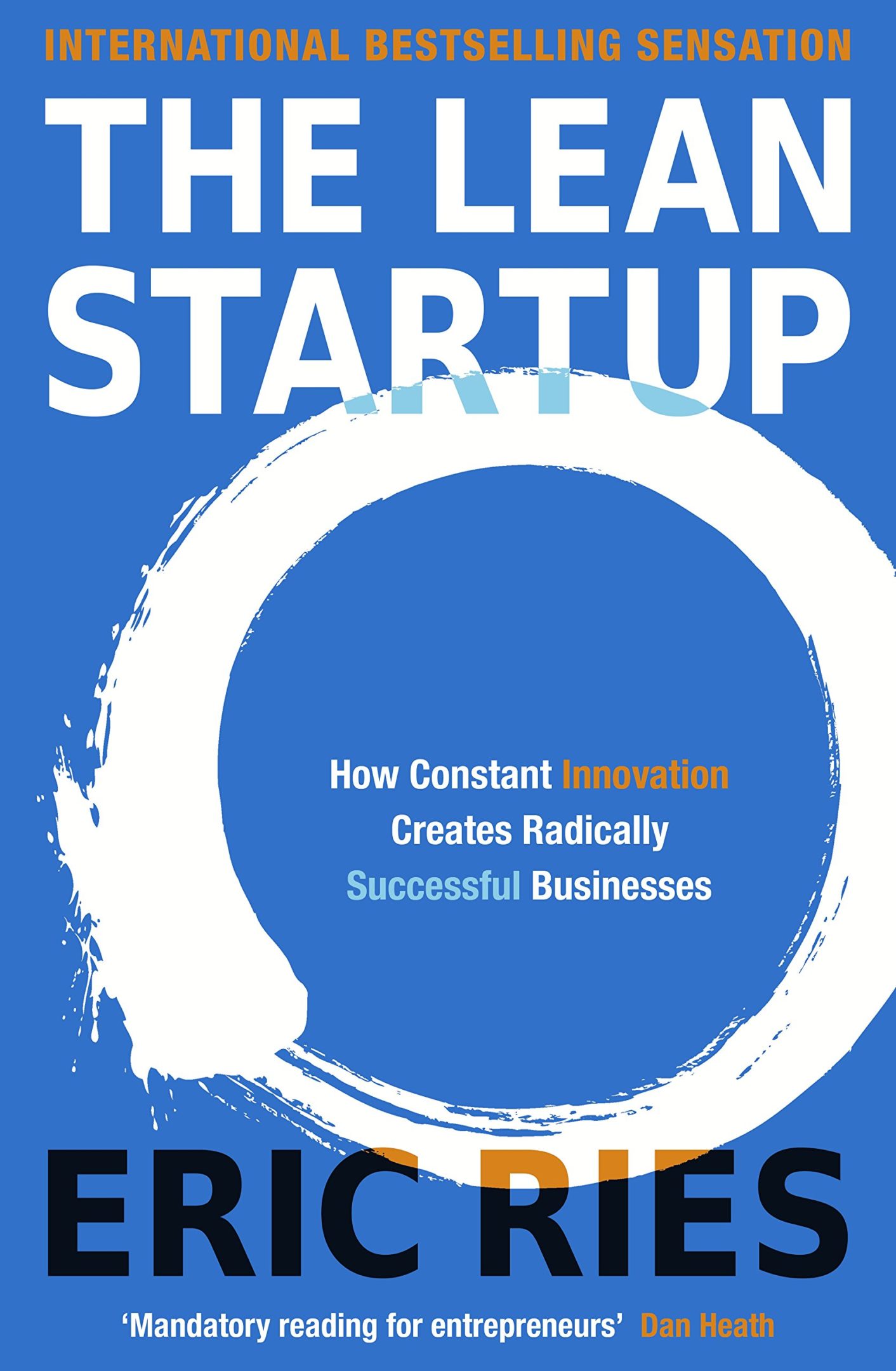
The Lean Startup Summary
Back in 2004, Eric Ries was working on a startup called IMVU and Steve Blank was an investor and advisor for them. Steve had a methodology he called “Customer Development.” This was later released in a book called The Four Steps to the Epiphany. Eric combined Steve’s framework, the manufacturing practices of Toyota from Japan and Agile software development in what became The Lean Startup. You can see the website for The Lean Startup by clicking here.
This book is widely regarded as “industry standard” best practices for startups. Easily considered one of the classics, it is arguably the first book you should read. It outlines basic principles anyone starting a startup should indisputably know. In fact, it outlines principles anyone trying to iteratively grow any business should know.
I use the outline below to look up and reread parts of the book as necessary. Hopefully you’ll find it as useful as I have.
The book is divided into three parts:
- Vision
- Steer
- Accelerate
Vision
Initially we try to create learning milestones into the internal vision. Startup MUST
- Create an engine of growth.
- Create a feedback loop between the automobile and the driver
Start ups need to be managed differently from established companies
The process of creating a plan, setting milestones and delegating tasks to employees will not work with the start up because they don’t truly know what their customers want, which approaches are best and what will be sustainable. They must constantly adopt and stay flexible with their plan
The purpose of a start up is to find a sustainable business model
You must find a way to acquire customers and earn money serving them. On the work today and in the future as well. How do you turn their desires into constant revenue? IMPORTANT: The faster a startup finds its way to a sustainable business the likelier it is to succeed.
Find your sustainable business model through validated learning
This means finding the right product for the right people and understand how to sell to them as opposed to having a great plan from the start. Do not use questionnaires. Talk to real customers and realistic environment. See if people will actually buy your product. Founders often use dummy websites to do this and then say “out of stock” when you try to order.
The leap of faith assumptions: test your value and growth hypothesis
To test your value hypothesis you must find early adopters in brace your product The growth hypothesis is that it will appeal to more than the initial small group of early adopters In the case Facebook, more than half of registered users logged in at least once a day (value).
This is the DAU, better known as Daily Active Users, the North Star Metric (NSM) used by Facebook. At colleges where it was introduced, 75% of students signed up within the first month available (growth).
Steer
Strategy is based on assumptions that need to be tested.
Develop a Minimal Viable Product (MVP) to test your idea in the market
The dummy website idea mentioned above is one example of this. Dropbox used a video as a proof of concept (POC). You must find out as quickly as possible whether there is any demand for your product.
Page 107 is his quality principle in an MVP: “If we do not know who the customer is we do not know what quality is.”
Chapter 7 is Measure on page 114.
He calls this innovation accounting. That simply means you’re using metrics to reveal the true direction of your company instead of just showing that you were growing.
Page 121. He talks about buying five dollars of Google ad-words per day which gives you just enough user tests to collect data. You’re not trying to move the product, you’re just trying to collect user data.
Page 130. He talks about actionable metrics versus vanity metrics. Not sure if he invented the term actionable metrics.
Page 143. The value of the three “A”s of metrics.
- Actionable
- Accessible
- Auditable
Build, measure and learn (BML) as fast and as often as possible.
These are called BML loops. By collecting quantitative data from the experiment, you measure interest in the product how many people click the purchase button how long did they say on the site etc.
- Build the MVP
- Take the product to its actual market. Measure or gather customer feedback with quantitative data but also talk directly to customers.
- Take what you Learned and use it to conceptualize a new optimize product The faster you can go through these loops the more likely you will find a sustainable business model.
Use split-tests to optimize your product
Valuable features either help the company attract more customers or increase its revenue. One way to do this is to create two versions of the product: one with the feature and one without and see which is more appealing.
Page 123. Cohort analysis. He said this is tracking the performance of each group of customers that comes into contact with the product independently it’s called a cohort. In his example, this is simply a sales funnel checked by month. Tracking registered but didn’t login and what percentage logged in and what percentage had a conversation and what percentage had a bunch of conversations and how many actually ended up paying, etc.
Page 126. Optimization versus learning.
Vanity metrics are often flattering but misleading and do not help you find a sustainable business model
Page 128. Vanity metrics: a word of caution.
He shows a graph that depicts a total increase in number of exposures and active users.
GRKKT: This doesn’t reflect churn rate, but he doesn’t say that. Obviously if your conversion rates are improving, that’s one metric. If your churn rate is improving, that’s another metric. I think his main point is that just showing Gross isn’t enough.
Vanity Metrics: Media attention or Facebook fans. How many all-nighters you’ve pulled or how many hours you’ve worked. Only thing that pays the bills are actually users.
Page 138. Shows a Kanban work diagram how to move stories through the pipeline as validated learning. This is for once you have active product development going on.
Page 153. Land of the Living Dead. This is when you have some traction to monetize, but are not sustainable or aren’t growing as fast as you or your investors would like. You don’t know whether to close the startup or keep pivoting. You’re stuck. The book offers an example solution to an example problem.
To find the right business model for your company you usually have to pivot
A pivot can include redefining core value proposition of your product, choosing a different customer segment or changing your main sales channel. He uses the following examples:
Page 150 for zoom-in pivot story. Pair down the product to just one feature.
Page 156 consumer segment pivot. Features stay the same but change the target market. In this case he went from B2C to B2B. Sold his service to businesses who wanted to lobby to government instead of individual people.
Page 157. Platform pivot. This example is not clear to me. He says he was selling the application one customer at a time before, but now anyone could become a customer with just a credit card. The new billing model allowed someone to send a letter for $.20 but it sounds like they didn’t have to pay for a subscription? Perhaps a billing platform pivot?
Page 160. A start ups runway is the number of pivots it can still make before being out of $. Page 164 through 169 is the story of Wealthfront.
Page 172 through page 176 list a catalog of pivots Zoom in pivot.
- Zoom out pivot.
- Customer segment pivot.
- Customer need pivot.
- Platform pivot. – change from an application to a platform or vice versa. They created platform to sell a single application, but decided to leverage the platform itself as a vehicle for third parties to develop their own related products.
- Business architecture pivot. – High margin low volume versus low margin high volume.
- Value capture pivot. – aka monetization pivot.
- Engine of growth pivot. – Viral sticky and paid Channel pivot. – Or distribution channel.
- Technology pivot.
Every startup should focus on one engine of growth
There are three types of growth engines
- Sticky engine – Returning existing customers, expanding the relationship
- Viral engine – existing customers take care of the marketing. Organic growth. For this to work you must make it easy for customers to engage their friends.
- Paid engine – paid online marketing. Cost per acquisition must be lower than the user lifetime value.
In general, it is wise to focus only one of them so things pick up speed as quickly as possible. If new features change the growth speed and they’re valuable. If not they’re a waste
Every start up must define its core metrics and analyze them properly
Examples could include:
- increases in number of paying customers
- Average session length per customer
- Number of recommendations generated per thousand customers
Sometimes it’s helpful to use the so-called cohort analysis: compare how do customers behave to old ones. If metrics aren’t improving, you are stagnating.
Accelerate
Batch
Page 184. Batch processing.
Grow
Page 206 chapter 10. Grow.
Four ways past customers drive scalable growth (as opposed to one time hits)
- Word-of-mouth – organic
- As a side effect of product usage – viral
- Through funded advertising.
- Through repeat purchase or use – Only has one time use or as a subscription service.
Page 209. Three engines of growth.
- Sticky – If the rate of new customer acquisition exceeds the term rate the product will grow. The speed of growth is determined by the rate of compounding = natural growth rate minus the churn rate
- Viral – He says this is not simple word-of-mouth. This type of growth engine depends upon person to person transmission as a necessary consequence of normal product use. Customers are not intentionally acting as a Vangelis. Growth happens automatically as a side effect of customers using the product much like a virus spreads. Viruses are not optional. To buy something via PayPal you must have a PayPal account. Now two people have to have a PayPal account. To play something on Spotify you must announce it on your Facebook account. To send an email with our service there must be something at the bottom that says “email service provided by”
- Paid – We all know what that is.
Page 219. Engines of growth determine product market fit.
Adapt
Page 229. Here he starts to get into specific implementation concepts such as The Five Whys, making a proportional investment, the curse of the five blames and appointing a Five Whys Master. Then he recommends adapting to smaller batches.
Innovate
In this chapter he talks about nurturing disruptive innovation. His points that PC backed start ups naturally this way but they’re in ternal sort of teams may require additional support and buying from senior management create proper structure.
Resources are scarce and teams need independent development authority as well as a personal stake in the outcome. Companies are encouraged to have a platform for experimentation while still protecting the parent organization. The ultimate goal is for company to transition, so that this methodology becomes the status quo.
Conclusion
I’ve outlined the basics, but you will need to read the book to understand the actionable details. For example, exactly what are The Five Whys and how do you use them (critical info)? How do you know which MVP to build? How do you know which kind of pivot to use? Which growth engine should you use? Hopefully, I’ve provided enough info that you can see the book is well worth the purchase price. The page number references might be off depending upon which edition you own, but hopefully give you a rough idea of where to look when you want to learn more about a particular topic.
Of course, it doesn’t answer everything you need to get started (nor was it meant to). For example, it explains how to iterate once you’ve decided what startup to start, but it doesn’t tell you what startup to start. Nor does it tell you how to come up with that idea.
Perhaps of equal importance are further details of implementation. Yes, yes, if you buy the book, it answers the questions I outlined above. But I still had questions after reading it. For example, as you’re going about your customer interviews, how do you go about contacting your audience and establishing channels of communication? How many people do you contact? Exactly what do you say to ensure you’re collecting the right info (not just getting “feedback”)? Exactly what qualifies as a properly constructed MVP experiment? Precisely how do you do that? If it’s not answered in The Lean Startup, the remaining critical “how-to” questions are likely answered in the follow-up book: Running Lean.

The Lean Startup: How Today’s Entrepreneurs Use Continuous Innovation to Create Radically Successful Businesses Paperback – International Edition, January 1, 2001
4.6 out of 5 stars 10,766 ratings
Author Bio
Benjamin Arritt

Share:
Follow Us:
Most Popular


10+ PERSONAL CRM OPTIONS REVIEWED

10 OUTSOURCED BDR SALES AGENCIES COMPARED

FRACTIONAL MARKETING: EFFICIENT BUSINESS GROWTH
Subscribe To Our Newsletter
No spam. Curated directories & articles about business, startups and templates.
MENU
Related Posts

How to Build a High-Performing Marketing Stack for CMO Success
Dive into our blog post to learn how chief marketing officers can transform from brand champions to revenue drivers and customer whisperers through a strategic

10+ PERSONAL CRM OPTIONS REVIEWED
Yes, there are “solutions,” but nothing is perfect. Here is the path of what I evaluated, what I liked, what I didn’t and why. I

10 OUTSOURCED BDR SALES AGENCIES COMPARED
I interviewed several of the top performers according to Clutch, but this was not my exclusive source. Here’s why: some smaller companies, without as much

FRACTIONAL MARKETING: EFFICIENT BUSINESS GROWTH
Fractional marketing involves hiring fractional marketers, or part-time marketing professionals. This way businesses can leverage specialized expertise while reducing the costs associated with a full-time
